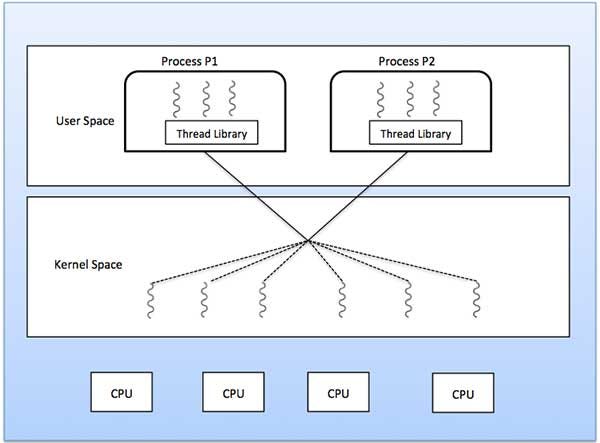
Understanding Code Optimization
What is Code Optimization?
Code optimization refers to the process of modifying code to make it more efficient in terms of performance, speed, and resource consumption.
In practice, this can mean refining algorithms, reducing overhead, and improving the way data is handled. Each change, no matter how minor, can lead to substantial gains.
For instance, a developer might switch from a linear search to a binary search in a large dataset, drastically reducing the time complexity from O(n) to O(log n).
Why Code Optimization is Important
Understanding why code optimization matters is crucial for any developer. The advantages include:
- Improved Performance: Faster execution leads to a better user experience.
- Reduced Resource Usage: Optimized code consumes less memory, benefiting hosting costs.
- Scalability: Efficient code can handle increased loads with minimal alteration.
By prioritizing code optimization, developers ensure that their applications perform at their best and remain sustainable as they scale, something which TECHFACK emphasizes in its own development practices.

Identifying Performance Bottlenecks
Profiling Your Code
Once developers recognize the need for code optimization, the next crucial step is profiling their code. Profiling allows developers to observe where their programs spend most of their time and resources. By using tools like gprof or Py-Spy, one can visualize and analyze performance metrics in real time.
Here’s how profiling can help:
- Identify slow functions: Pinpoint which functions are consuming the most time.
- Analyze memory usage: Discover objects and variables that occupy excessive memory.
- Optimize hotspots: Focus on optimizing performance hotspots for maximum impact.
Common Performance Issues
Understanding common performance issues can streamline the optimization process. Here are a few, based on experiences shared by developers in the TECHFACK community:
- Inefficient algorithms: Using suboptimal algorithms can lead to unnecessary resource consumption.
- Excessive data loading: Loading unnecessary data from databases can dramatically slow down performance.
- Memory leaks: Failing to manage resources properly can lead to memory leaks, causing degraded performance over time.
By actively profiling code and being aware of these issues, developers can effectively tackle performance bottlenecks and refine their applications for better functionality.

Techniques for Optimizing Code
Algorithm Optimization
After identifying performance bottlenecks, it’s time to dive into techniques for optimizing code, starting with algorithm optimization. This process involves selecting the most efficient algorithms for your tasks. For instance, instead of using bubble sort, which has O(n²) complexity, switching to quicksort or mergesort can significantly enhance performance, especially with larger datasets.
Data Structures Optimization
Next, consider optimizing data structures. Using the right data structure can drastically improve your code’s efficiency.
- Arrays vs. Linked lists: Choose arrays for fast access and linked lists for frequent insertions and deletions.
- Hash tables: Great for quick lookups and can eliminate the need for expensive linear searches.
Memory Management Techniques
Finally, effective memory management techniques are vital. Poor memory management leads to leaks and overall sluggishness. Techniques such as:
- Garbage collection: Tools in languages like Java can automate memory management.
- Pooling objects: Reusing objects instead of creating new ones reduces overhead.
Incorporating these optimization techniques can significantly elevate your code’s performance, as highlighted in the practical examples shared within the TECHFACK community.

Best Practices for Code Optimization
Use of Efficient Libraries
Building on the optimization techniques discussed, it’s essential to follow best practices for code optimization. One key practice is leveraging efficient libraries. Instead of reinventing the wheel, developers can utilize well-established libraries that offer optimized functions, such as NumPy for numerical computations in Python. This not only boosts performance but also saves valuable development time.
Coding Standards and Practices
Adhering to coding standards and practices also plays a crucial role. These practices ensure that code remains clean and maintainable. For example:
- Consistent naming conventions can improve readability.
- Code reviews foster shared knowledge and help catch inefficiencies early.
Testing and Benchmarking
Lastly, implementing thorough testing and benchmarking is vital for performance validation. Regularly running performance tests helps developers identify slow areas before they impact users. Utilizing tools like JMeter for load testing can pinpoint bottlenecks during peak usage.
By incorporating these best practices into their workflow, developers within the TECHFACK community have consistently improved their projects’ efficiency and performance.

Tools for Code Optimization
Profiling Tools
With a solid understanding of best practices in code optimization, the next step involves utilizing the right tools to aid in the journey. Profiling tools are invaluable for analyzing code performance. For instance, VisualVM or cProfile helps developers visualize where time is spent in the code, enabling targeted optimizations.
Debugging Tools
Debugging tools play a crucial role in identifying and resolving issues that might affect application performance. Tools like GDB (GNU Debugger) and PDB for Python allow developers to step through code and scrutinize variable states. This hands-on approach helps in uncovering jagged edges within the codebase.
Benchmarking Tools
Lastly, benchmarking tools measure the performance of code under different conditions. Apache JMeter and Gatling can simulate multi-user loads to evaluate how code behaves under pressure. Automated benchmarking across iterations ensures that optimizations lead to tangible performance improvements.
By employing these tools, developers in the TECHFACK community effectively streamline their optimization efforts, making informed decisions based on data.

Implementing Code Optimizations
Making Code Readable While Optimized
As developers proceed to implement code optimizations, a critical element to keep in mind is maintaining readability. Optimized code shouldn’t become cryptic; rather, it should be clear and straightforward. For example, using meaningful variable names and commenting complex sections can aid future developers (or even you) in understanding the logic later.
- Use comments judiciously: Explain why a particular optimization was made.
- Consistent formatting: Adhere to coding conventions across the codebase.
Balancing Optimization and Maintainability
Striking a balance between optimization and maintainability is essential. Over-optimizing can lead to complicated code resistant to future changes. It’s vital to assess if the performance gain justifies the complexity introduced.
- Refactor with care: Optimize sections that offer significant performance benefits without compromising readability.
- Engage your team: Regular discussions can yield insights on maintaining a healthy balance.
By fostering clear, maintainable code while optimizing, developers within the TECHFACK community enhance both performance and collaboration effectiveness.

Case Studies on Code Optimization
Real-World Examples
Examining real-world examples of code optimization can provide invaluable insights. One notable case involved a social media platform that faced slow loading times, frustrating users. By replacing nested loops in their data queries with optimized indexing, the team reduced page load time by 60%. This transformation resulted in a remarkable increase in user engagement.
Lessons Learned
From these examples, several key lessons emerge:
- Prioritize impact: Focus on optimizing the most critical sections of the code that affect user experience.
- Team collaboration: Engaging the entire team during optimization discussions fosters better approaches and ideas.
- Iterate and measure: Regular performance reviews ensure that optimizations yield the desired results.
These case studies resonate within the TECHFACK community, encouraging continuous improvement and sharing best practices in optimization efforts.
Future Trends in Code Optimization
Machine Learning for Code Optimization
As the landscape of technology evolves, machine learning is set to revolutionize code optimization. By analyzing large datasets of code patterns and performance metrics, machine learning algorithms can recommend optimizations that would be difficult for developers to identify manually. For instance, tools like Facebook’s Aroma can suggest code transformations based on existing codebases, effectively learning from them.
Automation in Performance Tuning
Automation is another exciting trend reshaping performance tuning. Advanced tools can continuously monitor system performance and automatically adjust configurations based on real-time usage patterns.
- Self-tuning databases: These adapt query performance dynamically.
- Continuous integration tools: Automation in testing can uncover bottlenecks faster.
These trends, actively discussed within the TECHFACK community, highlight a future where code optimization becomes less manual and more intelligent, paving the way for more efficient and effective development processes.

Conclusion and Recap
Summary of Optimization Strategies
In summation, the journey to optimize code involves multiple strategies that enhance performance without sacrificing readability or maintainability. Key strategies discussed include:
- Algorithm and data structure optimization: Selecting the right tools for the job accelerates performance.
- Utilizing efficient libraries: Leveraging existing resources saves time and boosts efficiency.
- Regular profiling and testing: Continuous monitoring helps identify slow points and areas for improvement.
Looking Ahead
As we look forward, it’s exciting to embrace trends like machine learning and automation, which promise to further streamline the code optimization process. Engaging in conversations around these advancements within the TECHFACK community ensures that developers remain at the forefront of best practices, ready to enhance both their projects and their skill sets. Embracing these strategies not only enriches individual growth but also strengthens the overall development landscape.

